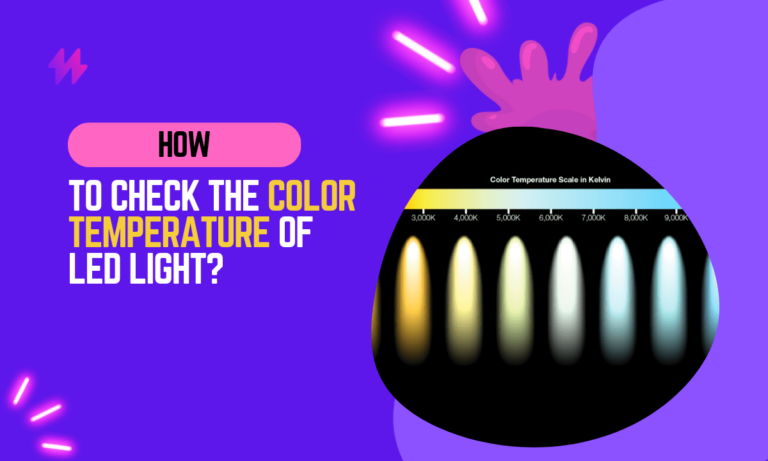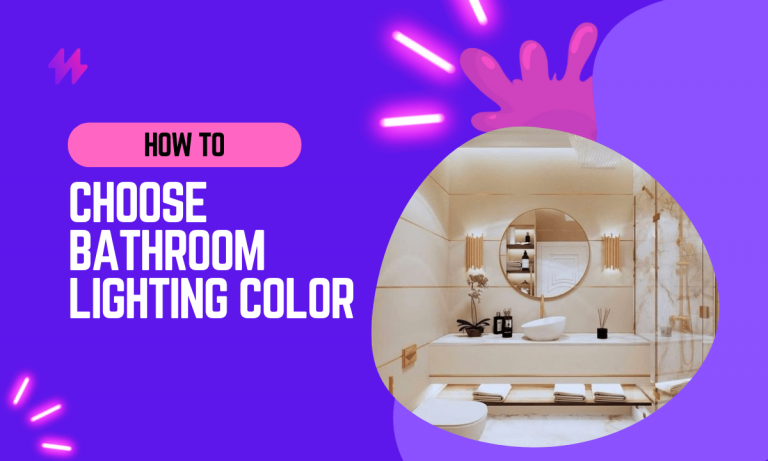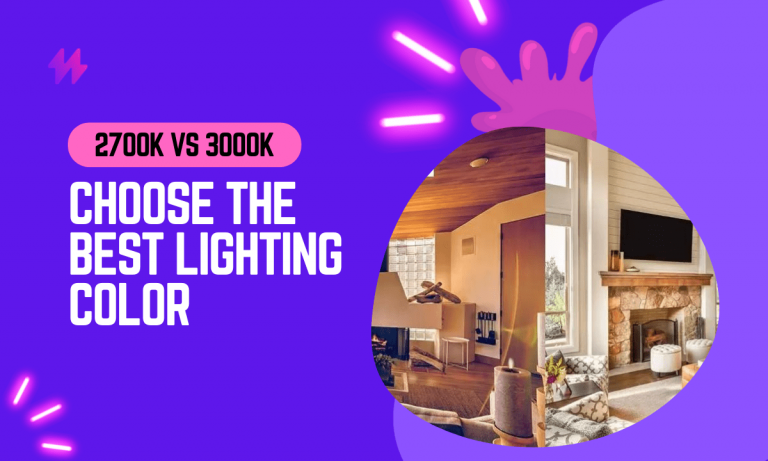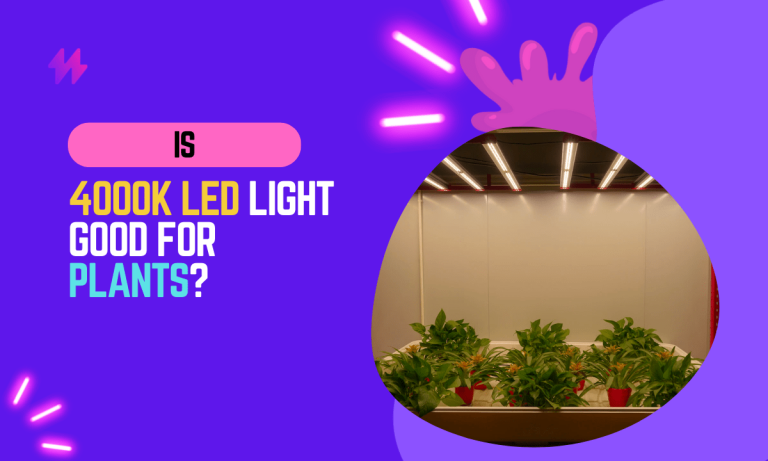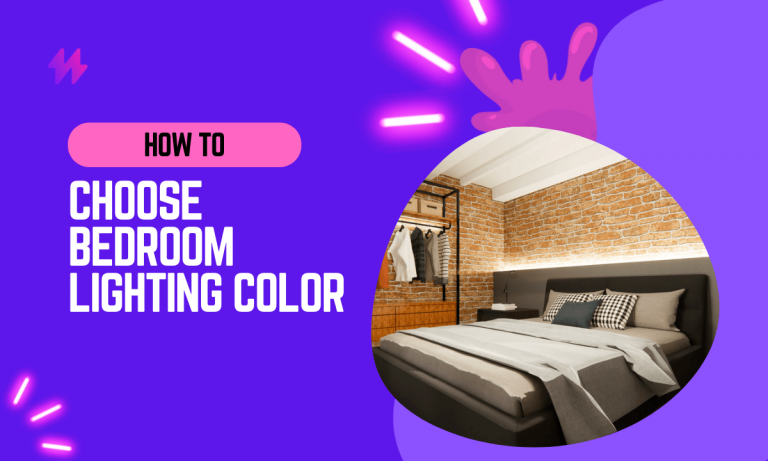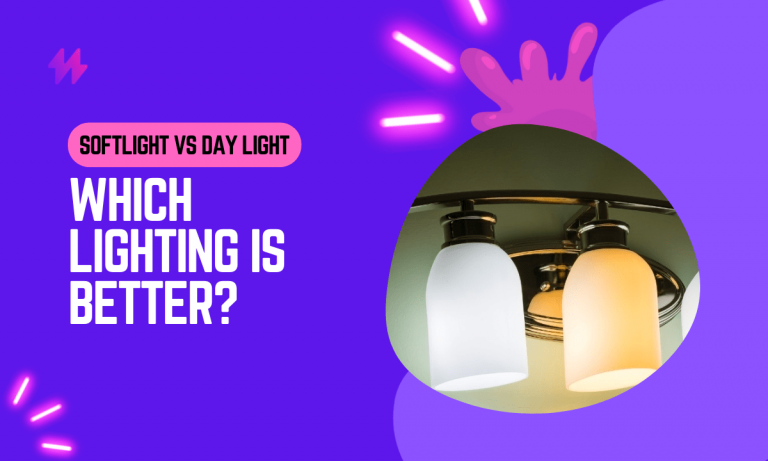What is The Best Lighting for Makeup?
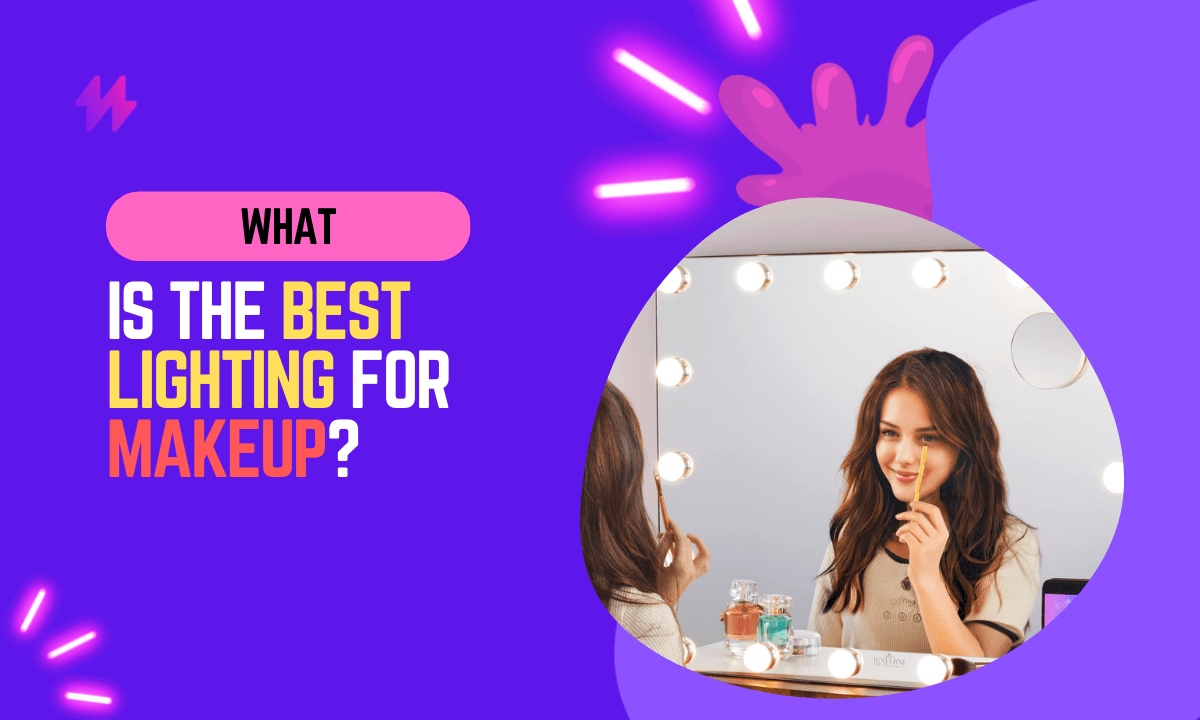
When it comes to achieving a flawless makeup look, lighting plays a crucial role. It can make the difference between a beautifully blended and well-executed application and one that falls short of your expectations. Lighting not only helps you see the true colors of your makeup products but also affects how your finished look appears in various settings.
The right lighting can enhance your makeup look in numerous ways. Firstly, it allows you to see the true colors and textures of your cosmetics, enabling you to make accurate choices in terms of shades and finishes.
Proper lighting also helps in achieving an even and well-blended application, ensuring that there are no visible streaks or harsh lines.
What is the best lighting for makeup?
The most optimal lighting for makeup application is natural daylight. However, indoors, the aim is to recreate the advantages of natural daylight by selecting the best lighting for makeup by the combination of light fixtures, LED bulbs, and Kelvin temperatures.
Why Natural Light?
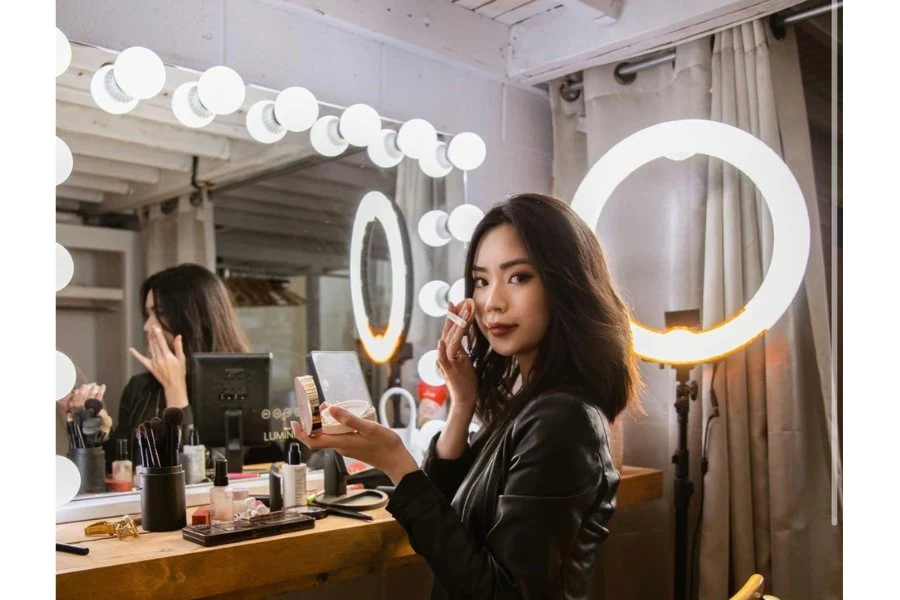
Natural lighting is often regarded as the gold standard of lighting for makeup application. It provides a true representation of colors and ensures that your makeup looks seamless in various environments. Some advantages of natural lighting for makeup application include:
Color accuracy: Natural light replicates the full spectrum of colors, allowing you to see your makeup products’ true tones and undertones. This helps in selecting the right shades and avoiding any mismatched or ashy-looking results.
Balanced lighting: Natural daylight evenly illuminates your face, minimizing the appearance of shadows and providing a more accurate reflection of how your makeup will look in different settings. This is particularly important when it comes to blending foundation, contouring, and achieving a seamless transition between shades.
Flattering and natural-looking results: Natural light has a soft and diffused quality that enhances your features and provides a natural-looking glow. It can reveal any areas where your makeup might appear cakey or uneven, allowing you to make adjustments for a flawless finish.
While natural light is beneficial throughout the day, there are specific times when natural sunlight is most favorable for makeup application. These include:
- Morning (Sunrise)
- Mid-Morning to Early Afternoon
- Late Afternoon (Golden Hour)
Must Read: Soft White vs Daylight Bulbs – What’re the Differences?
Artificial Lighting Options
When natural light is not readily available or insufficient, artificial led bulbs and lighting becomes essential for achieving consistent and reliable makeup application. Here are some common types of artificial light bulbs and fluorescent lighting as options used for applying makeup:
Ring light
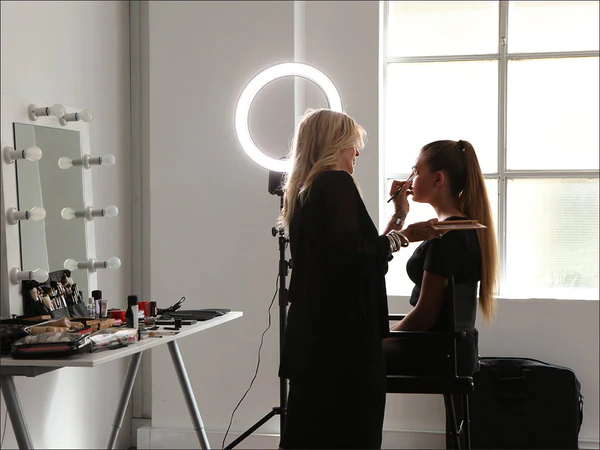
Ring lights are circular white light show fixtures with a central opening that accommodates the camera or mirror. They provide even, shadow-free illumination by surrounding the subject with white light. Ring lights are popular among makeup artists and content creators due to their ability to create a glamorous and well-lit effect.
Pros
- Even diffused lighting with minimal shadows.
- Creates a captivating catchlight in the eyes.
- Portable and easy to use.
Cons
- Limited adjustability in terms of intensity and direction.
- May not provide a wide coverage area for larger setups.
Lighted vanity mirrors
Lighted vanity mirrors feature built-in lighting surrounding the vanity mirror, providing direct and focused illumination on each side of the entire mirror, lighting the face. They are designed for makeup application and come in various sizes and shapes.
Lighted vanity mirrors offer a convenient and dedicated lighting solution for achieving precise and detailed makeup looks.
Pros
- Dedicated lighting designed specifically for makeup application.
- Provides direct illumination on the face, allowing for precise details.
- Often come with adjustable brightness settings.
Cons
- Limited coverage area focused mainly on the face.
- Can create shadows if positioned incorrectly.
- Bulbs may need to be replaced over time.
LED lights Panel
LED light panels consist of a grid of small LED light bulbs, providing a broader and more uniform distribution of light. They are versatile energy efficient and adjustable, allowing you to customize the intensity and color temperature of the lighting.
LED light panels are commonly used as bathroom lighting in professional makeup studios and offer consistent lighting for flawless makeup application.
Pros
- Versatile with adjustable intensity and color temperature.
- Even and uniform distribution of light.
- Can cover a larger area and accommodate different setups.
Cons
- May require additional stands or mounting equipment.
- The initial cost can be higher compared to other options.
Studio lighting setups
Studio lighting setups involve a combination of various light fixtures, such as softboxes, umbrella lights, and spotlights. These setups provide professional-grade lighting options with adjustable intensity, light direction, and color temperature.
Studio lighting setups offer precise control over the lighting environment, making them suitable for most makeup artists themselves, photographers, and those seeking professional-level results.
Pros
- Professional-grade lighting with precise control over intensity, direction, and color temperature.
- Versatile for different types of setups and photography/video needs.
- Can create various lighting effects and moods.
Cons
- More complex setup and adjustment process.
- Higher initial cost compared to other options.
Understanding Color Temperature
Color temperature refers to the characteristic color of light emitted by a light source, measured in Kelvin (K). It influences the overall mood and appearance of your makeup by altering how colors are perceived. Understanding color temperature is essential for creating the desired effect and ensuring your makeup looks its best.
The color temperature scale ranges from warm to cool tones. Lower Kelvin values, such as 2700K, indicate warm light with a yellowish hue, reminiscent of candlelight. Higher Kelvin values, such as 6500K, represent cooler light with a bluish tone, similar to daylight or a clear sky.
Warm vs. Cool Lighting and their effects on Skin Tones
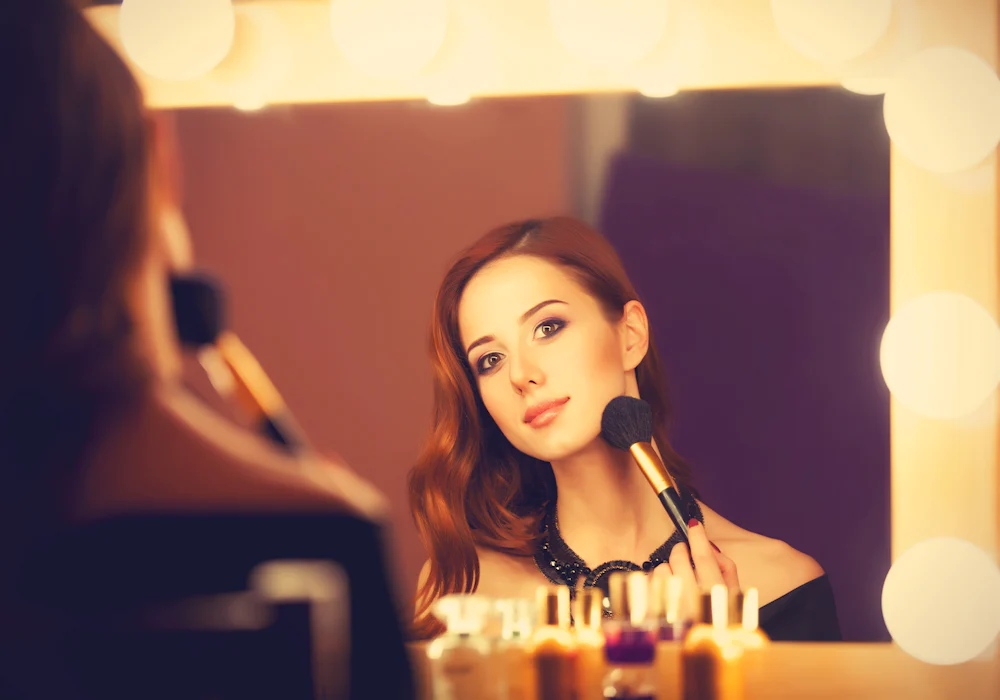
Warm lighting: Warm lighting with lower Kelvin values (around 2700K to 3000K) creates a cozy and inviting atmosphere. It adds warmth and a soft glow to the whole skin tone, making it appear smoother and more vibrant.
Warm lighting can be flattering for certain makeup looks, especially those aiming for a romantic or vintage-inspired feel. However, it may slightly distort color accuracy, making it crucial to adjust your makeup accordingly.
Cool lighting: Cool lighting with higher Kelvin values (around 5000K to 6500K) produces visible light with bright and crisp illumination. It closely resembles natural daylight and provides accurate color representation.
Cool lighting is ideal for achieving precise and well-balanced makeup looks, particularly for everyday or professional applications. It highlights details, enhances contrast, and ensures that your makeup appears as intended in various lighting conditions.
Also read: Cool White vs Neutral White: Choosing the Right White Light Color
Selecting the Right Color Temperature for Applying Makeup
Consider the following factors when choosing a color temperature:
- Lighting environment: Assess the lighting conditions in the space where you typically apply your makeup. If the existing lighting is warm or cool, you may want to complement it with a similar color temperature for consistency.
- Makeup style and occasion: Different makeup styles and occasions may call for specific color temperatures. For example, warm lighting can create a cozy ambiance for a romantic or evening makeup look, while cool lighting can provide a fresh and natural appearance for everyday makeup.
- Color accuracy: If color accuracy is crucial for your makeup routine, especially when working with specific shades or undertones, prioritize lighting with a color temperature that closely resembles natural daylight (around 5000K to 6500K).
- Personal preference: Ultimately, trust your own judgment and personal preference. Experiment with different color temperatures to find the lighting that enhances your makeup skills and makes you feel confident and comfortable.
Lighting Placement and Angles
Proper placement of lights on the makeup mirror is crucial for achieving optimal lighting conditions during makeup application. Consider the following guidelines for effective makeup mirror lighting placement:
- Position lights at eye level: Place your lights at or slightly above eye level to ensure even illumination across your face. This helps to minimize shadows and create a balanced lighting environment.
- Angle lights towards the face: Direct the lights towards your face at a slight angle, rather than directly overhead or from below. This angle helps to accentuate your features, highlight textures, and minimize unflattering shadows.
- Consider the three-point lighting technique: The three-point lighting technique involves using three light sources: key light, fill light, and backlight. The key light is the primary light source that illuminates the face, the fill light helps to soften shadows, and the backlight adds depth and separation from the background.
Avoiding shadows and uneven lighting
To avoid shadows and uneven lighting, follow these tips:
- Use diffusers or softboxes: Soften the light by using diffusers or softboxes over your light sources. These accessories help to create a softer and more diffused light, minimizing harsh shadows and providing a more flattering illumination.
- Ensure even coverage: Position your lights to provide even coverage across your face. Pay attention to areas that tend to cast shadows, such as the nose, under the eyes, and around the jawline. Adjust the position and intensity of the lights to ensure uniform lighting across your entire face.
- Avoid direct light on the mirror: If you’re using a mirror during your makeup routine, be mindful of any direct light falling directly onto the mirror’s surface. This can create reflections and glare that may interfere with your visibility and make it difficult to accurately assess your makeup application.
Adjusting Lighting for Different Makeup Styles
Everyday makeup
For everyday makeup, aim for lighting that closely resembles natural daylight. This allows makeup artists for you to achieve a well-balanced and natural-looking result that translates well in different settings. Consider the best lighting for makeup following adjustments:
Color temperature: Opt for lighting with a color temperature around 5000K to 6500K, which mimics natural daylight. This provides the most accurate reflection and color representation and ensures your makeup appears as intended.
Soft and evenly diffused lighting: Use softboxes or diffusers to create a gentle and diffused lighting effect. This helps to minimize harsh shadows and creates an even illumination that flatters your features.
Balanced lighting setup: Position the lights at eye level, angled towards your face to minimize shadows. Ensure even coverage from overhead lighting across your entire face, paying attention to areas that tend to cast shadows in bad lighting, dark spots such as the under-eye area, and around the nose.
Glamorous evening makeup
Glamorous evening makeup often calls for a more dramatic and captivating look. Adjusting the lighting can enhance the impact of your evening makeup:
Intensify the lighting: Increase the intensity of your lights slightly to create a more vibrant and striking effect. This helps to highlight the details and intricate work in your evening makeup.
Play with warmer tones: Consider using lighting with a slightly warmer color temperature (around 3000K to 4000K) to create a cozy and alluring ambiance. This can enhance the richness of your evening makeup and complement warm-toned shades.
Experiment with additional lighting: Incorporate backlighting to add depth and dimension to your evening makeup. This can be achieved by placing a light source behind you, slightly angled towards your hairline. It creates a halo effect and separates you from the background, making your makeup stand out.
Natural and minimal makeup
Natural and minimal makeup aims to create a fresh and effortless look. Adjusting your makeup mirror the lighting can enhance the subtlety and enhance your natural features:
Soft and even lighting: Use diffused and soft lighting on the bathroom mirror to create gentle and natural illumination. This natural light and fixture helps to eliminate shadows minimize any harsh shadows and ensure a soft glow on your skin.
Balanced lighting setup: Position the lights at eye level or slightly above, angled towards your face for even coverage. This helps to bring out the natural contours of your face and highlights your features with pink and blue light, without overpowering them with overly bright ones.
Opt for light with cooler tones: Consider using lighting with a cooler color temperature (around 5000K to 6500K) to provide a fresh and natural appearance. Cool lighting complements minimal makeup by providing clean and crisp illumination.
Special effects and creative makeup
Special effects and creative makeup involve unique and artistic looks that require specific makeup light lighting considerations to bring out their full potential:
Experiment with different lighting angles: Adjust the angles of your lights to create dynamic shadows and highlights that accentuate the special effects in your makeup. This can add depth and dimension to your creative looks.
Play with colored lighting: Incorporate colored gels fluorescent lights or LED light bulbs with adjustable colors to enhance the overall effect of your special effects makeup. This allows you to create a cohesive and immersive lighting environment that complements your creative vision.
Consider spotlighting: Utilize spotlights or focused lighting to draw attention to specific areas or details in your creative makeup. This helps to emphasize intricate designs or specific effects that you want to showcase.
Also read: Bright White vs Daylight Lighting
Additional Tips and Considerations
- Use softboxes to create soft, diffused lighting.
- Umbrella reflectors can be used to bounce and diffuse light. They come in different styles, such as white, silver, or gold, each producing a different effect.
- If you’re filming makeup tutorials or videos, ensure that the lighting setup is compatible with your camera settings. Adjust the white balance and exposure settings to accurately capture the colors and details of your makeup.
- Make sure the lighting is even across your entire face, as inconsistencies in lighting can affect the appearance of your makeup on camera.
- Dust and dirt can accumulate on light bulbs and fixtures, affecting the quality and intensity of the light. Regularly clean them using a soft cloth or a gentle cleaning solution to maintain optimal lighting conditions.
- Over time, bulbs can dim or burn out. Monitor the performance of your bulbs and replace them as necessary to ensure consistent lighting quality.
- Ensure proper wiring, use surge protectors, and follow manufacturer guidelines to prevent any accidents or electrical hazards.
Final Words
In conclusion, selecting the best lighting for makeup application is crucial as it influences how makeup looks in different environments. Natural daylight is universally recognized as the best type of lighting for makeup because it evenly disperses light and accurately reflects colors. However, when natural light is not available, LED lights that mimic daylight offer a viable alternative. These lights should ideally have a Color Rendering Index (CRI) of 90 or above, which ensures that the colors of the skin, makeup, and clothes are seen in their true form without distortion. LED lights not only provide excellent color accuracy but also generate less heat compared to traditional bulbs, making them more comfortable for prolonged use during makeup sessions.
Moreover, the arrangement of the lighting is just as important as the light type itself. To avoid shadows and uneven illumination, which can affect how one applies makeup, the lighting should ideally be positioned around the mirror to cover all angles—above, beside, and possibly below the face. This setup mimics a professional lighting ring that ensures the face is evenly lit from all sides, reducing the likelihood of makeup appearing too heavy or uneven in natural light. Adjustable brightness settings can also help in achieving the perfect balance of light for various makeup products and techniques. By investing in the right type of lighting and configuring it appropriately, anyone from a professional makeup artist to a beauty enthusiast can create flawless makeup looks that are both attractive and accurate in any setting.

